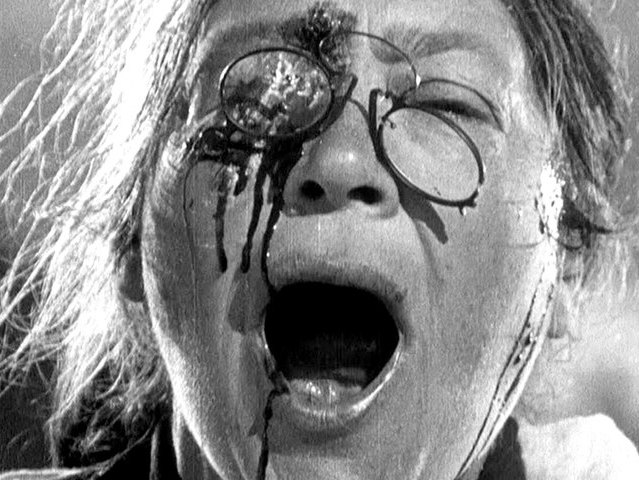
In the midst of the Russian Revolution of 1905, the crew of the battleship Potemkin mutiny against the brutal, tyrannical regime of the vessel's officers. The resulting street demonstration in Odessa brings on a police massacre.
EN
“It is only through an undoubtedly conscious design that crams the whole shot full to its very edges with sails that these photographs acquire the unity of mimic expression and the significance of gesture that become the depht of experience and the sense of the film. There is not even any room for argument here: the poetic expressiveness of the scene is created not by the motif but by the photography.”
Béla Balázs1
“In addition to the lens Balázs has forgotten another defining ‘instrument of production’: the scissors. The expressive effect of cinema is in the result of juxtapositions. It is this that is specific to cinema. The shot merely interprets the object in a setting to use it in juxtaposition to other sequences.”
Sergei Eisenstein2
“This film distinguishes itself from the hosts of American and European productions – not by its greater art of direction, though that as well, not by the more meticulous use of the possibilities of film technology and the more powerful mobilization of the masses. There is something else that separates the film from the world production, something fundamentally different. It has pierced a wall beyond which these films never venture. It takes on a subject that is real; it refers to a truth that should matter.”
Siegfried Kracauer3
“Potemkin is a great film, a rare achievement. To protest against it calls for the courage born of desperation. There is plenty of bad tendentious art, including bad socialist tendentious art. Such works are determined by their effects; they work with tired reflexes and depend on stereotyping. This film, however, has solid concrete foundations ideologically; the details have been worked out precisely, like the span of a bridge. The more violent the blows that rain down upon it, the more beautifully it resounds. Only if you touch it with kid gloves do you hear and move nothing.”
Walter Benjamin4
- 1Béla Balázs “The Future of film,” in The Film factory: Russian and Societ Cinema in Documents, eds. Richard Taylor and Ian Christie. (London & New York: Routledge, 1988), 145.
- 2Sergei Eisenstein, “Béla Forgets the Scissors,” in The Film factory: Russian and Societ Cinema in Documents, eds. Richard Taylor and Ian Christie. (London & New York: Routledge, 1988), 147.
- 3Siegfried Kracauer, “The Klieg Lights Stay On: The Frankfurt Screening of Potemkin,” in The Promise of Cinema: German Film Theory 1907-1933, eds. Anton Kaes, Nicholas Baer, and Michael Cowan. (California: University of California Press, 2016), 353.
- 4Walter Benjamin, “Reply to Oscar A. H. Schmitz,” in The Promise of Cinema: German Film Theory 1907-1933, eds. Anton Kaes, Nicholas Baer, and Michael Cowan. (California: University of California Press, 2016), 359.
NL
“Bronenosets Potemkin van Sergei Eisenstein, uit 1925. Sovjetcinemalegendes zijn uit ander hout gesneden. In plaats van de geboorte van de natie vieren ze de constructie van de toekomst.”
Frieda Grafe1

